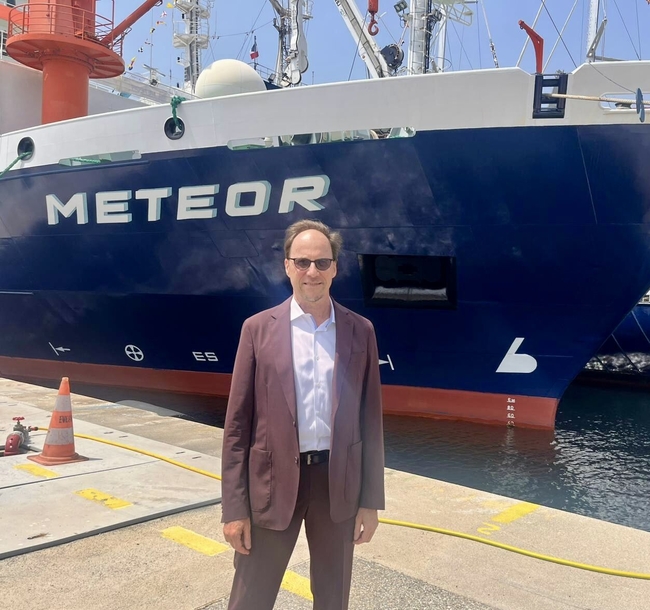20/06/2025 | The 3rd UN Ocean Conference can be considered a success throughout difficult geopolitical times and a milestone in ocean governance, although some higher ambitions had been articulated. Here are main points:
UNOC3 Legitimacy has been high: with around 60 heads of states and governments participating and around 175 countries with high-level representatives, its legitimacy and political weight has been significantly higher compared to UNOC1 2017 in New York and UNOC2 2022 in Lisbon and higher than other conferences not happening under the auspices of the UN. The remarkable absence of the US except technical and working level delegates was noted, but did not drive the political energy downwards. Germany was well represented by Minister for the Environment Carsten Schneider and high-level representatives from five Federal ministries; the events convened at the iconic research vessel ‘Meteor’ were a particular feature.
UNOC3 could yield relevant results – the Nice Ocean Action Plan (here) and an impressive list of voluntary commitments (here): It is important to note that the UNOC declaration is not binding, but it exerts moral and political pressure on states. Together, the outcomes of the UNOC are politically powerful: There is renewed and additional support for marine biodiversity and the ratification of the BBNJ treaty, with an entry into force now expected for late 2025 and, possibly, a first COP in 2026. With the launch of the ‘Blue NDC Challenge’ France and Brazil urged placing ocean solutions at the core of global climate and development policies via ‘Nationally Determined Contributions’ for the next climate Conference of the Parties happening in November 2025 in Brazil — pivotal for the ocean’s future. Ninety-six countries have been supporting a declaration for more ambitious treaty on plastic pollution (here) with life-cycle perspectives on reductions, an activity that could trigger further action at the forthcoming negotiations in August this year in Geneva.
A new group called ‘Ocean Pioneers’ has been founded by twenty states which have both ratified BBNJ and support the moratorium on deep seabed mining. They intend, in particular, to facilitate policy coordination across the manifold agencies, including regional fishery associations. Thirty-seven countries have been supporting the precautionary moratorium on deep-sea mining projects, including Germany; twenty-four countries have been explicitly objecting to Trump’s proposed mining in international waters. The role of the International Seabed Authority (ISA) is stressed in article 18 of the declaration. A Sustainable Blue Tourism Pact has been launched. Financing marine protection has been receiving powerful pledges, inter alia to set up a One Ocean Finance Facility and contributing additional US$25M to the Global Coral Reef Fund, however actors such as World Resources Institute (WRI) characterize those results as unfinished business. Overall leadership has been extending beyond France and co-host Costa Rica along with European countries, now involving other countries such as Panama, South Korea, Vietnam, Mexico, Madagascar and others, in particular from the Small Island Developing States. The 100% Alliance for sustainable ocean management has come out stronger than before. Concerned civil society organisations such as reef communities, mangrove people, seaweed farmers, and from small-scall fishery were particularly outspoken and engaged.
Science and Policy: Science has played a pivotal role at the UNOC3 in Nice, it emphasized the crucial role of science in addressing ocean health and sustainability. The UN Decade of Ocean Science for Sustainable Development (2021-2030) was a key framework for the conference, with the aim of generating the scientific knowledge needed for a sustainable ocean. With the preceding and well connected ‘Our Ocean Science’ Conference (OOS) bringing together over 2000 scientists there has been a strong science-policy interface. The USA has historically played a central role in the funding and development of global ocean observation systems. The recent cuts in research funding, e.g. in the USA, are therefore having an impact on international programs. Some important discussions were being held in Nice on whether and how to fill this gap in global ocean observation (ZMT is a supporter of the POGO Statement). As a result, a new research programme ‘Neptune Mission’ on ocean monitoring and exploration has been announced, with support from EU, UK, China, India, Chile and others, including Tara Foundation and OceanX. There will also be a Space4Ocean Alliance connecting space research with the marine community and advance modelling efforts, inter alia by the newly launched ‘Mercator International Center for the Ocean’. A new ‘Starfish Barometer’ is expected to provide annual information on the state of the ocean, drivers and impacts. After all, this is a strong call for interdisciplinary and solution-oriented research, for integrated coastal and ocean management, nature-based solutions, and proper national ocean accounts. There is support for a ‘strong science-policy interface to provide timely, credible and salient scientific and socio-economic information – the proposal for an International Panel for Ocean Sustainability (IPOS) is ‘noted’ in the final declaration (probably less than what was expected), however actors intend to ramp-up activities.





